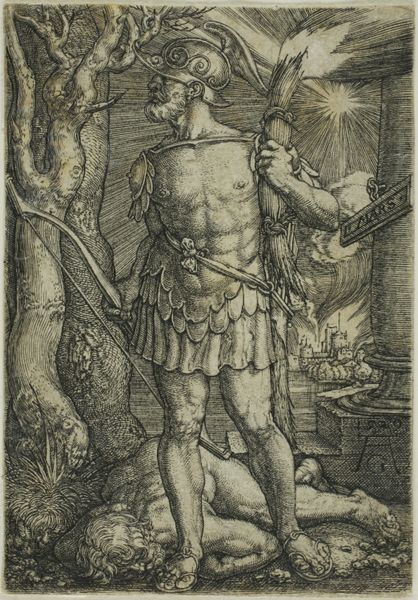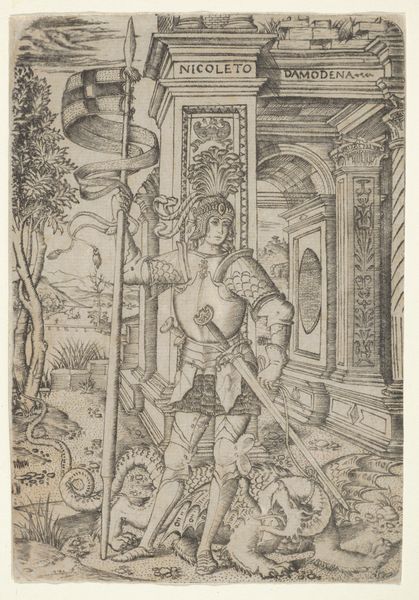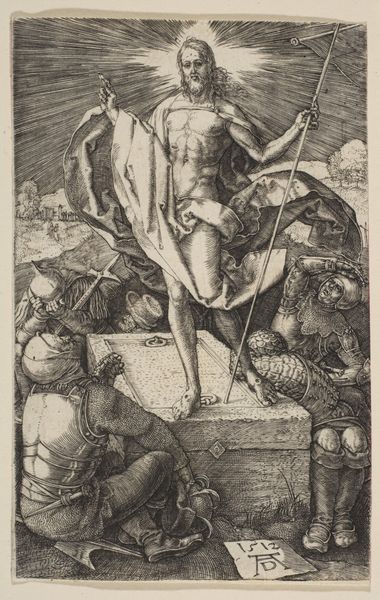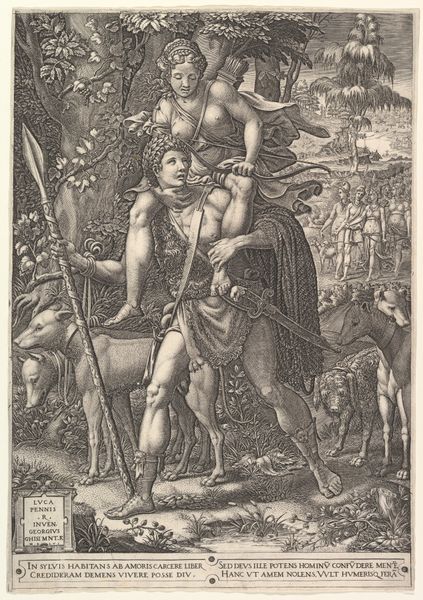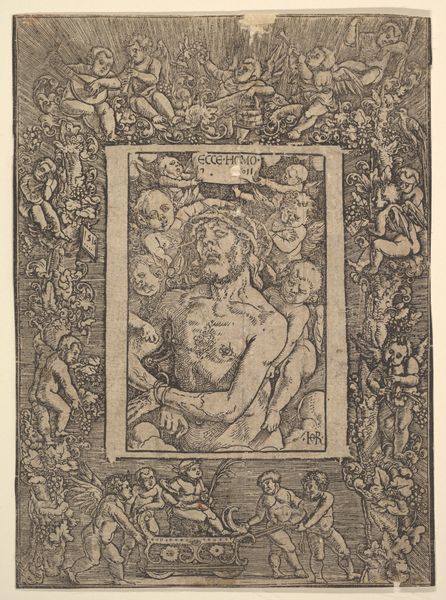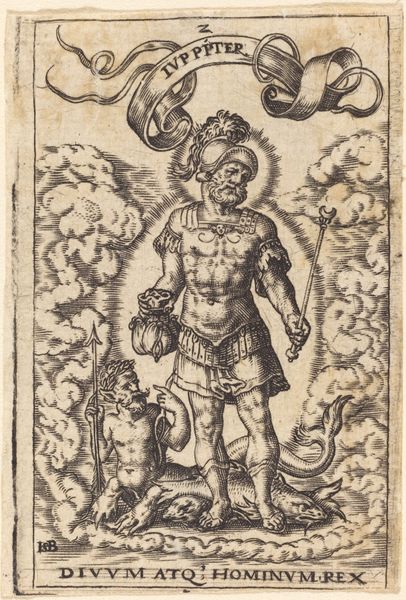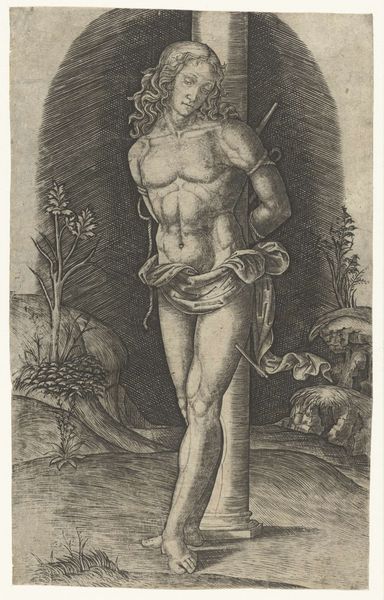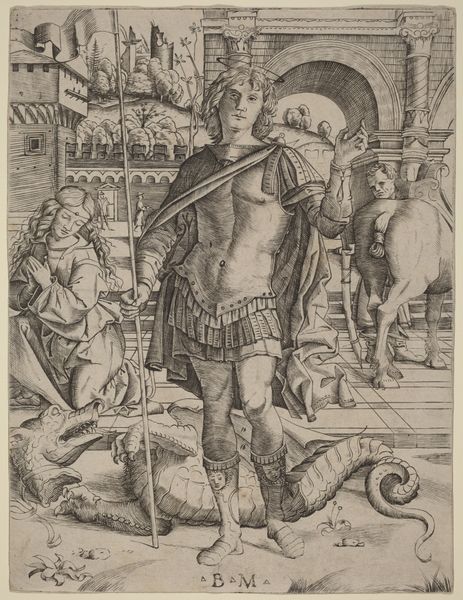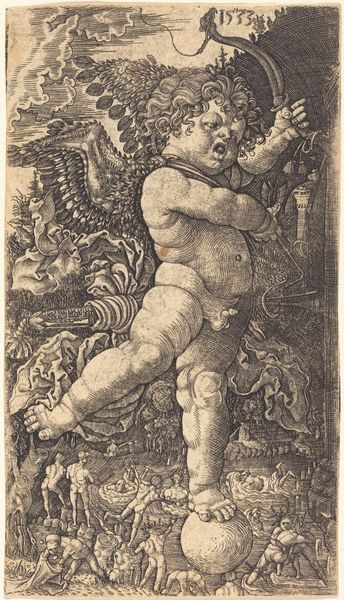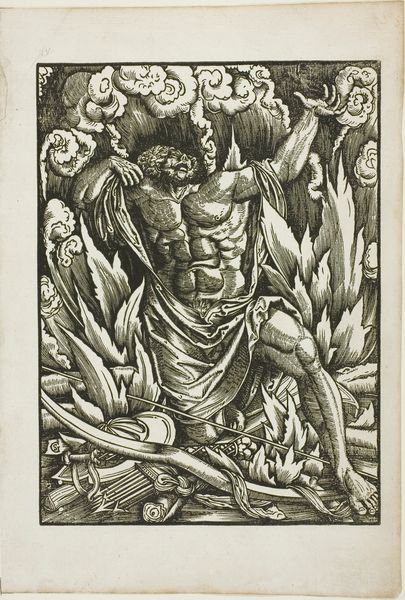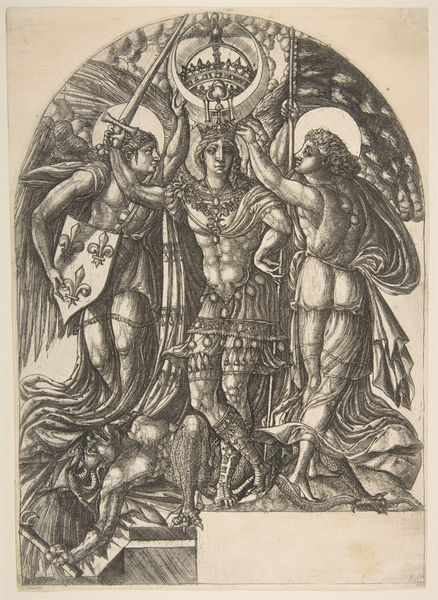
print, engraving
#
pen drawing
# print
#
old engraving style
#
figuration
#
11_renaissance
#
line
#
history-painting
#
northern-renaissance
#
engraving
Copyright: National Gallery of Art: CC0 1.0
This engraving of Saint George was made around 1530 by the artist known only as Master HL in Germany. It reflects a time when the visual codes of Renaissance Humanism were colliding with a fascination for the exotic. The figure of St. George is adorned with elaborate, seemingly non-European garments, including a feathered headdress. Behind him, a pagoda-like structure peeks out, suggesting a distant, perhaps idealized, "East." The figure of Saint George had a particular resonance in the Holy Roman Empire and in the cities of the Hanseatic League, where he was seen as a symbol of civic virtue and martial strength. The artist's fusion of Christian iconography with exoticizing elements speaks to the intersection of religious, economic, and cultural forces in 16th-century Europe. It highlights a moment of growing global awareness, fueled by trade and exploration, even as existing social and religious structures remained firmly in place. To better understand this image, we could examine travelogues and mercantile records from this time to unpack how different cultures were perceived and represented, how these perceptions shaped artistic production, and how art, in turn, reinforced or challenged those perceptions.
Comments
No comments
Be the first to comment and join the conversation on the ultimate creative platform.
